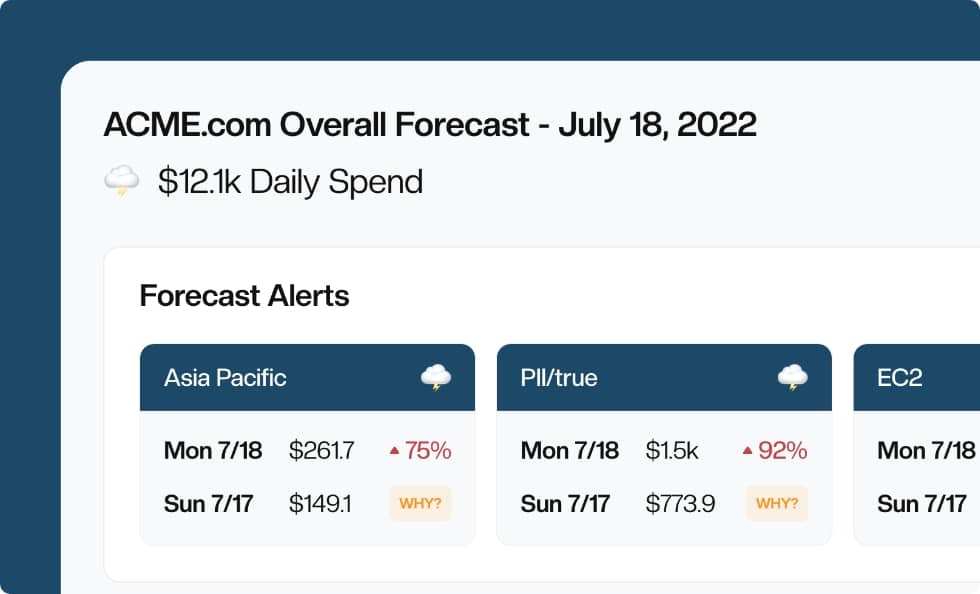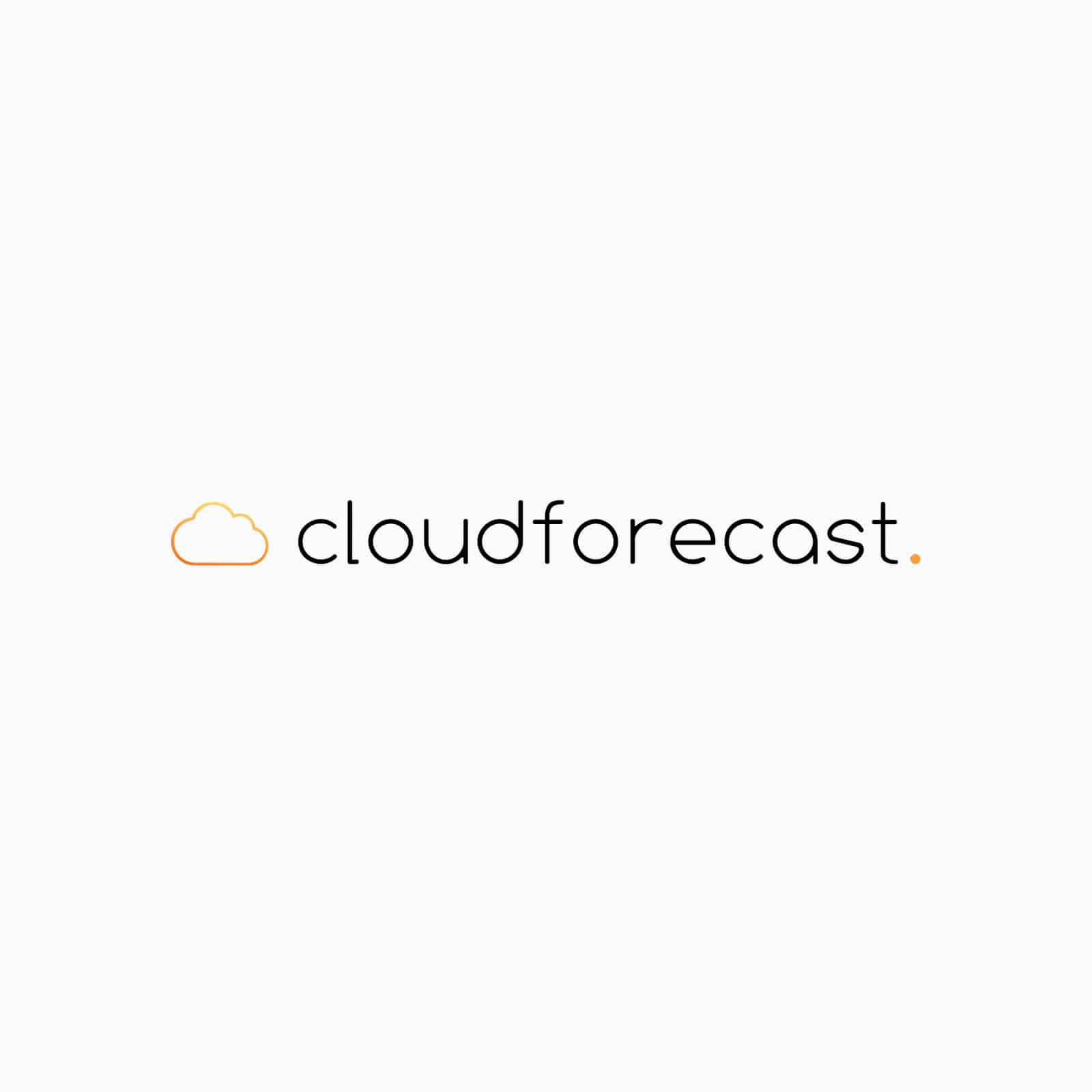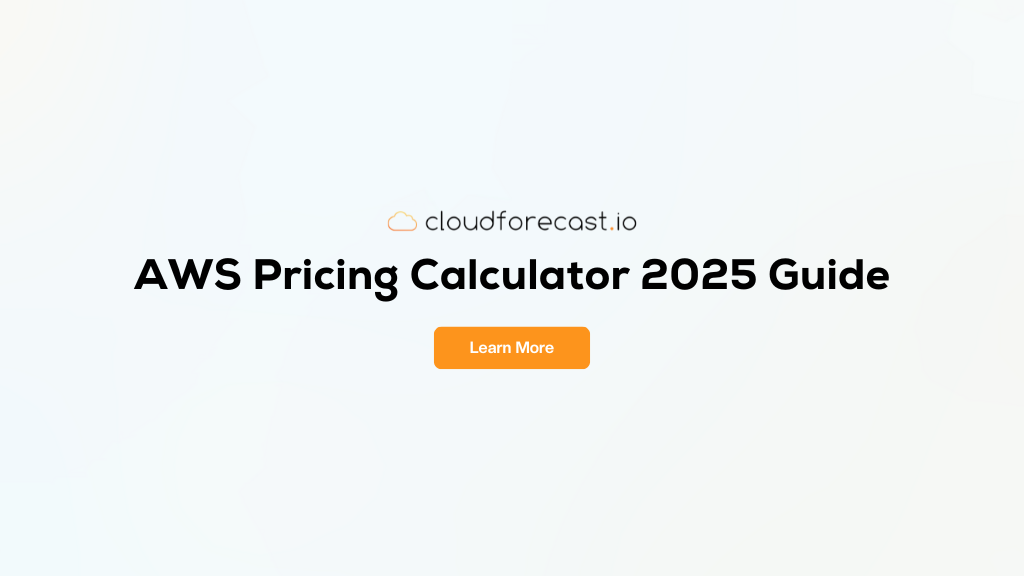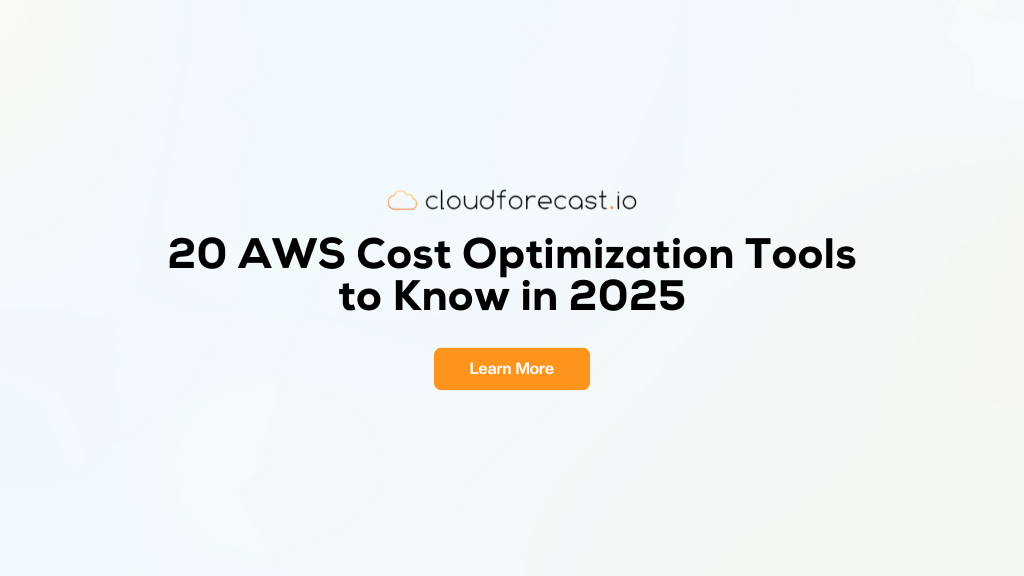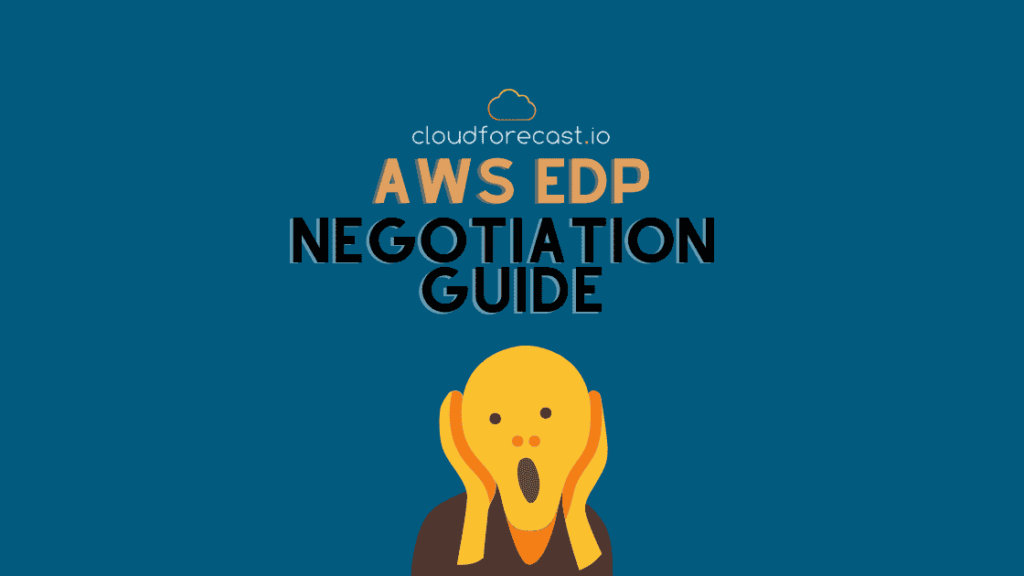AWS Budgets vs Cost Explorer: 2025 Guide
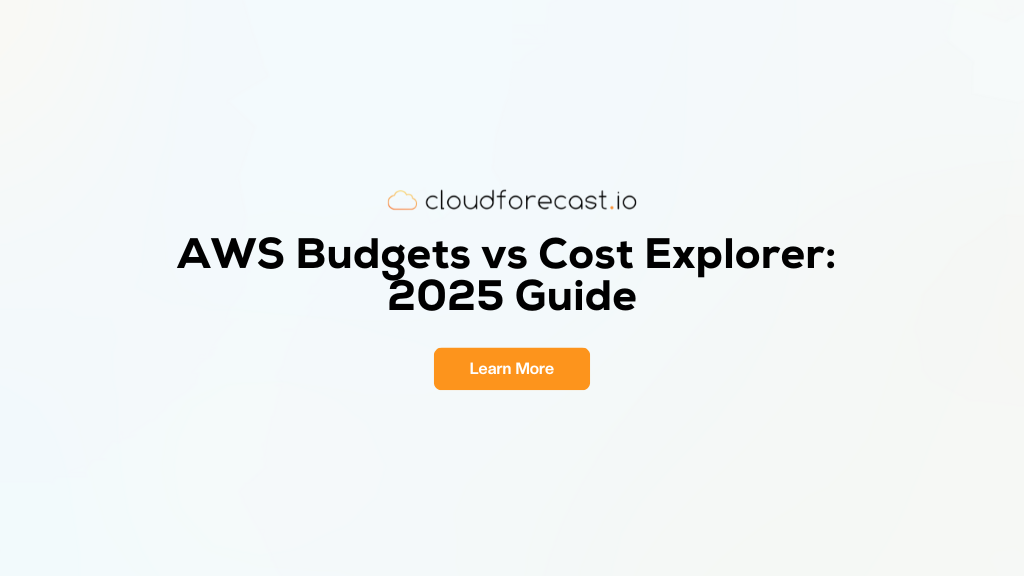
AWS’s flexibility in cloud pricing, notably its pay-as-you-go pricing model, is widely acknowledged as a benefit. Yet, this flexibility can lead to escalating AWS bills if usage isn’t closely monitored.
The HashiCorp 2023 State of Cloud Strategy Survey found that 94% of surveyed companies are still overspending on the cloud. As cloud environments grow in complexity, tracking and controlling costs becomes increasingly challenging. Amazon Web Services offers a solution to this with its cloud cost management console, comparing AWS Budgets vs Cost Explorer helps determine what’s best for you.
AWS Budgets focuses on the future, helping you understand AWS billing via specific budgets before you incur expenses. AWS Cost Explorer focuses on the past, giving insight into what was spent, why, where, and by whom.
This blog post guides you through a detailed analysis of AWS Budgets vs Cost Explorer to help you optimize your cloud budgeting.
What is AWS Budgets?
AWS Budgets is an integral component of AWS cost management tools. It is a cloud financial management tool that allows you to set custom cost and usage budgets, as well as set alerts to get notified when your forecasted or actual usage exceeds the defined thresholds. AWS Budgets helps organizations monitor their AWS usage and forecast costs based on historical usage data.

AWS Budgets can help you with cost management in a variety of ways.
- Budget Types: AWS Budgets offers various budget types, including cost budgets, usage budgets, reserved instance utilization budgets, and savings plan coverage budgets. This diversity allows for comprehensive AWS cost management monitoring across different dimensions of your account.

- Customizable Budgets: You can set budgets based on cost, usage, or both on an annual, monthly, or daily cost basis. Budgets can be configured for specific accounts, AWS cost allocation tags, different time periods, and AWS service types.
- Alerts and Notifications: Set up alerts to receive notifications when actual or forecasted costs breach the budgeted amount. The thresholds can be defined in the form of a percentage or absolute value. Notifications can be accessed through multiple channels, including email, Amazon chatbot alerts, and Amazon Simple Notification Service (SNS).

- Budget Actions: AWS Budgets supports actions that can be triggered when the budgeted amount is breached. Actions might include stopping or modifying AWS resources or invoking AWS Lambda functions. You can set up automated responses to control and mitigate costs based on budget policies.
- Forecasting: Estimate future costs based on historical usage patterns and implement cost optimization. This helps organizations anticipate potential changes in spending and act accordingly. With detailed insights into spending patterns and forecasts, you can make more informed choices about cost allocation and investment in AWS services.
What Are the Use Cases of AWS Budgets?
AWS Budgets is a valuable tool for cost visibility, budget maintenance, and overall AWS cost management. It can be used for various needs, including product launches where it ensures optimal resource allocation without overspending. It’s also crucial in managing departmental spending, allowing each division to operate within set financial boundaries.
For businesses experiencing seasonal demand fluctuations, AWS Budgets offers the flexibility to scale resources efficiently. And in post-merger integrations, it facilitates seamless consolidation and management of AWS cloud resources, ensuring cost-effective transitions. Overall, it serves as a strategic asset for all AWS account holders in aligning cloud resource usage with organizational goals and financial constraints.
What is AWS Cost Explorer?
AWS Cost Explorer is a cloud visibility tool designed to help users visualize, understand, and manage their AWS costs and usage. It provides insights into spending patterns, allowing users to identify cost drivers and make informed decisions to optimize their AWS resources.
One of the most impactful features of AWS Cost Explorer is the granularity offered through numerous filters, which enable users to finely analyze Cost and Usage Reports (AWS CUR) using specific parameters like time, services, and regions, and practice AWS cost optimization.

Below are ways you can use AWS Cost Explorer from your AWS cost management tools.
- Visualization and Graphs: AWS Cost Explorer provides graphical representations of your AWS costs over time. You can view your costs by service, linked accounts, and usage types, which helps in understanding where your money is being spent.
- Custom Usage Reports: You can create a custom usage report to analyze costs that are based on specific criteria such as time range, services, regions, and more, offering insights into how each segment contributes to overall AWS billing. Additionally, the tool supports time-based analysis and custom tagging, enabling businesses to track spending trends over time and align costs with specific projects or teams(depending on the use case).

- Forecasting: The tool offers forecasting capabilities, which help you estimate your future AWS costs based on historical usage data. This assists in budget planning, resource allocation, and informed decision making.
- Recommendations and Insights: AWS Cost Explorer provides recommendations and insights to help identify potential cost-saving opportunities and improve overall efficiency.
What Are the Use Cases of AWS Cost Explorer?
AWS Cost Explorer is a key tool for AWS cost management, offering historical usage reports that are crucial for both day-to-day management and strategic planning. It is especially useful for creating accurate budgets and forecasts, as it analyzes past usage data to predict future cloud costs. It also guides decision-making on resource allocation, detailing how different AWS cost management tools impact overall spending.
In essence, AWS Cost Explorer is not just about tracking costs, but understanding the granularity of what was spent, why, where, and by whom. This enables you to make informed decisions in a FinOps way, making it a valuable asset for any organization looking to get the most of its AWS investment.
AWS Budgets vs Cost Explorer—What’s the Difference?
| Feature/Aspect | AWS Budgets | AWS Cost Explorer |
| Primary Purpose | Proactive financial management by setting and tracking budgets. | In-depth analysis of historical AWS spending and usage patterns. |
| Key Functionalities | -Custom budget alerts -Automated actions based on budget thresholds -Reserved Instances and Savings Plans tracking | -Advanced data filtering and grouping -Detailed cost-trend analysis and custom reports -Recommendations for Reserved Instances and Savings Plans |
| Strengths | -Strong budget control and forecasting -Automated responses to budget overruns -Effective for cost governance and compliance | -Comprehensive cost visibility analysis and visualization -Granular insights into spending -Useful for identifying cost-savings opportunities |
| Weaknesses | -Limited to budget management, not detailed cost analysis -May not adapt quickly to dynamic changes in spending | -Lacks proactive budget notifications and alerting features -Usage report includes data with a delay (not in real-time) -Requires detailed tagging for full functionality |
| Data Focus | Forward-looking, focusing on future and current budget adherence. | Retrospective, emphasizing past spending and usage trends. |
| Best Suited for | -Organizations needing strict budget adherence -Scenarios requiring immediate action on budget overruns | -Detailed cost analysis and optimization -Long-term financial planning and trend analysis |
Considerations for Choosing Between AWS Budgets and AWS Cost Explorer
When deciding between AWS Budgets vs Cost Explorer, consider the following key aspects to ensure alignment with your organization’s cloud cost management needs.
Primary Objective:
- Opt for AWS Budgets if your goal is to proactively set and manage AWS spending with alerts for threshold breaches, mainly for strict budget adherence.
- Choose AWS Cost Explorer if your focus is on retrospective cost data analysis of spending patterns for strategic planning and identifying optimization opportunities.
Complexity of Analysis Required:
- AWS Budgets is more straightforward, suitable for simpler cloud environments where the primary concern is adhering to budget limits.
- AWS Cost Explorer is better suited for complex, multi-dimensional analysis of diverse workloads across various AWS services and cost categories.
Forecasting Needs:
- AWS Budgets offers basic forecasting, primarily for budget management.
- AWS Cost Explorer provides advanced, detailed forecasting features based on historical usage data.
Time Focus:
- AWS Budgets is preferable for real-time budget monitoring and immediate response to spending changes.
- AWS Cost Explorer is better for analyzing past expenditures and trends to make informed decisions.
User Expertise:
- AWS Budgets is generally more user-friendly and requires less financial analysis knowledge, making it a good fit for teams without dedicated financial analysts.
- AWS Cost Explorer, with its detailed reporting, might require more expertise to utilize fully.
AWS Budgets vs CloudForecast
CloudForecast simplifies the process of establishing monthly budgets for your engineering team, adopting a total ownership cost (TCO) approach for straightforward setup. This method allows for efficient and user-friendly budget configuration that matches back to how your engineering team’s budgets on AWS might be setup.

Within the settings of our Daily Cost Monitoring Reports, we offer the flexibility to set two distinct types of monthly budget tracking:
- Fixed Budget: Set your own fixed budget value, and if the “End-of-Month Estimate” is higher than the “Fixed Budget” set, the Daily Cost Report will provide budget alerts to you in the Forecast Alerts.
- Last Month’s Budget: Our system looks at the previous monthly AWS bill, and if the “End-of-Month Estimate” exceeds last month’s AWS costs, we will alert you in the Forecast Alerts.
If you have multiple CloudForecast Cost Reports setup by teams via our sub-accounts or tags feature, you can quickly set budget limits for each report. By adding the Monthly Budget to the Daily Cost Report, budget notifications alert team members if they are trending above their allotted budgets.
The AWS budgets email content sent to your team may be limited, often necessitating further analysis in Cost Explorer to pinpoint the exact causes of cost increases.

AWS Cost Explorer vs CloudForecast
We appreciate the usefulness of AWS Cost Explorer and its ongoing enhancements the past few years. Yet, many of our users choose CloudForecast for its ability to bridge specific functionality gaps.

For engineers juggling various technical duties, delving into AWS Cost Explorer for insights can be overly time-consuming. It also means managing an additional dashboard. CloudForecast is crafted to complement AWS Cost Explorer, streamlining the cost management process for engineering teams.
We’re not aiming to replace AWS Cost Explorer with a more complex version or add another complicated dashboard to the mix, potentially ignored by engineers. Our primary objective is to simplify AWS cost management, enabling engineering engineering teams to focus on their essential technical tasks.
We differentiate from AWS Cost Explorer in several key aspects, making CloudForecast the preferred choice for many engineering teams:
- Proactive and Focused Features and Reporting: Easy-to-understand daily summary of AWS Costs sent to your teams via Email, Slack, or Microsoft Teams.
- Team-based Features and Reports: Create and deliver daily AWS Cost Reports by teams, projects, or environments.
- Tailored Reporting: Custom dashboards, reporting and insights for your finance team.
AWS Cost Management Best Practices
To effectively manage AWS costs, it’s crucial to understand and implement best practices for both AWS Budgets and AWS Cost Explorer. These tools, while distinct in their functionalities, play complementary roles in providing a comprehensive view of your monthly AWS bill.
AWS Budgets Best Practices
Set clear budgets for various services. Begin by establishing specific budgets for the different AWS cost management tools you use. This includes EC2, S3, RDS, and others. Each service may have different usage patterns and costs, so tailor your budgets accordingly.
- Regularly monitor and adjust budgets. Your AWS usage and needs might evolve over time. Regularly review and adjust your budgets to reflect these changes. Track your AWS usage easily with CloudForecast. This ensures that your budgets remain relevant and effective in controlling costs.
- Implement granular budgets for projects or teams. If your organization has multiple teams or projects, create separate budgets for each. This granularity helps in tracking and managing costs more effectively and holds specific teams or projects accountable for their monthly AWS bill.
- Integrate with cost management tools. Use AWS Budgets in conjunction with other cost management tools and practices for a more holistic approach. This might include integrating with your internal finance systems or using third-party cost management solutions.
AWS Cost Explorer Best Practices
- Utilize tagging for detailed insights. Proper tagging and cost allocation tags is crucial in AWS Cost Explorer. Tags allow you to categorize and track your AWS resources and usage effectively. Ensure that all resources are consistently and appropriately tagged for accurate tracking and reporting.
- Customize reports for specific needs. AWS Cost Explorer allows for the creation of customized reports. Tailor these reports to reflect the specific cost and usage information that is most relevant to your organization.
- Leverage forecasting features. Utilize the forecasting feature in AWS Cost Explorer to predict future usage and costs based on historical data. This can aid in budget planning and decision-making processes.
- Explore cost-optimization recommendations. Regularly review these suggestions and implement them where feasible to reduce cloud costs.
Common Best Practices for Both Tools
- Employ effective resource tagging. Both AWS Budgets and AWS Cost Explorer rely heavily on tagging for detailed data segmentation and analysis. AWS cost allocation tags ensures that all resources are accurately and consistently monitored. This includes tagging by department, project, environment (e.g., production, development), and any other relevant dimensions. For more information, see tagging best practices.
- Utilize cross-functional collaboration. Encourage collaboration between finance, operations, and development teams. This ensures that everyone is aligned with cost management objectives and understands the insights provided by these tools.
- Focus on training and awareness. Educate your team about the importance of cost management and the functionalities of both AWS Budgets and AWS Cost Explorer. An informed team is more likely to adhere to best practices in resource usage and tagging.
Remember, the key to successful AWS cost management is continuous monitoring, analysis, and adjustment based on the insights these powerful tools provide.
Final Thoughts
Effectively managing Amazon Web Services costs depends on selecting the right tool, tailored to your specific needs. AWS Budgets is ideal for proactive budgeting and expenditure control, ensuring you stay within financial limits. AWS Cost Explorer, on the other hand, excels in retrospective spending analysis, helping to discover cost-savings opportunities and optimize future cloud spending.
The most effective strategy often involves leveraging both tools in conjunction, with AWS Budgets setting financial parameters and AWS Cost Explorer providing deep insights for staying within those parameters.
Manage, track, and report your AWS spending in seconds — not hours
CloudForecast’s focused daily AWS cost monitoring reports to help busy engineering teams understand their AWS costs, rapidly respond to any overspends, and promote opportunities to save costs.
Monitor & Manage AWS Cost in Seconds — Not Hours
CloudForecast makes the tedious work of AWS cost monitoring less tedious.
AWS cost management is easy with CloudForecast
We would love to learn more about the problems you are facing around AWS cost. Connect with us directly and we’ll schedule a time to chat!
